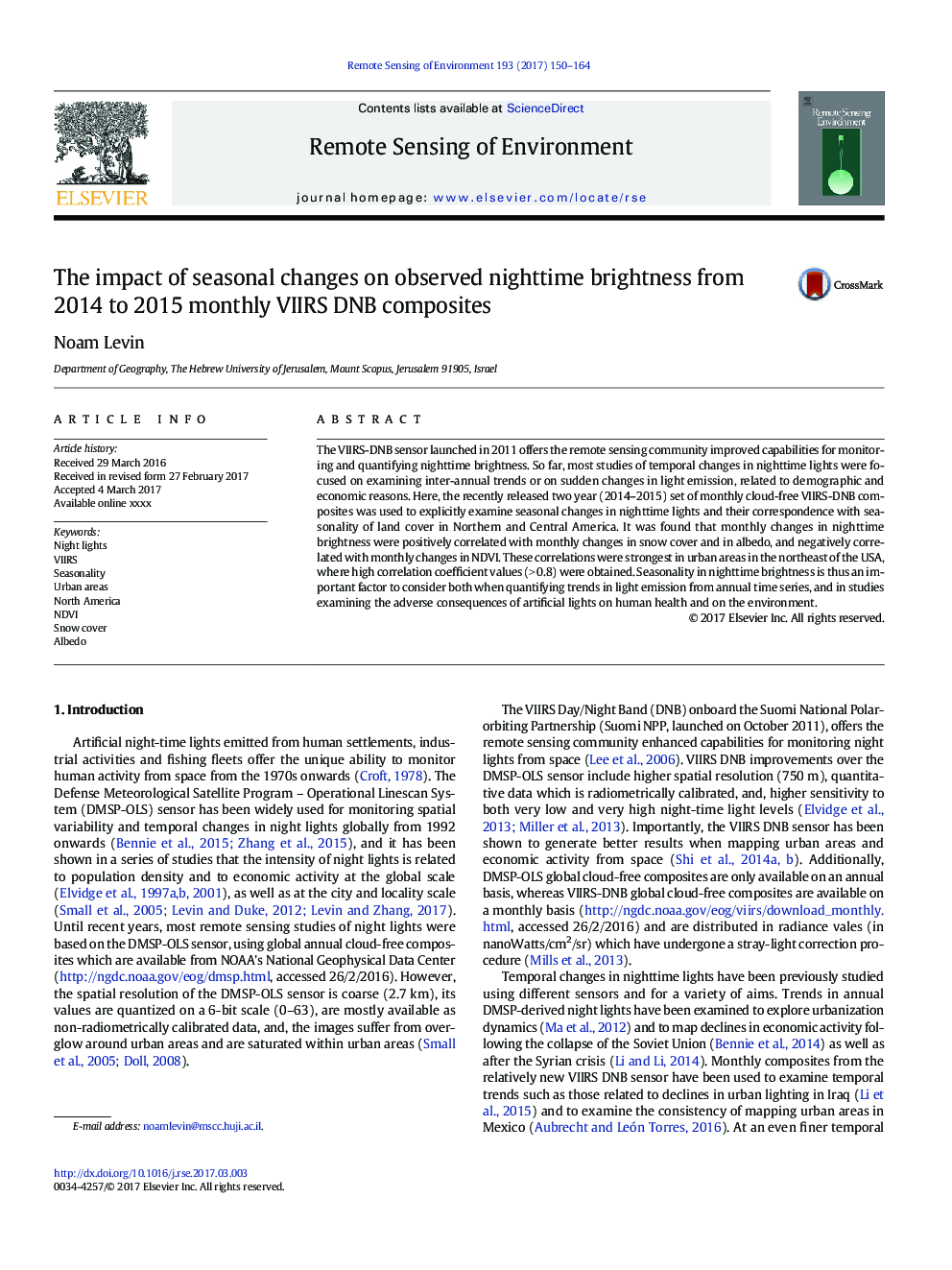| Article ID | Journal | Published Year | Pages | File Type |
|---|---|---|---|---|
| 5754704 | Remote Sensing of Environment | 2017 | 15 Pages |
Abstract
The VIIRS-DNB sensor launched in 2011 offers the remote sensing community improved capabilities for monitoring and quantifying nighttime brightness. So far, most studies of temporal changes in nighttime lights were focused on examining inter-annual trends or on sudden changes in light emission, related to demographic and economic reasons. Here, the recently released two year (2014-2015) set of monthly cloud-free VIIRS-DNB composites was used to explicitly examine seasonal changes in nighttime lights and their correspondence with seasonality of land cover in Northern and Central America. It was found that monthly changes in nighttime brightness were positively correlated with monthly changes in snow cover and in albedo, and negatively correlated with monthly changes in NDVI. These correlations were strongest in urban areas in the northeast of the USA, where high correlation coefficient values (>Â 0.8) were obtained. Seasonality in nighttime brightness is thus an important factor to consider both when quantifying trends in light emission from annual time series, and in studies examining the adverse consequences of artificial lights on human health and on the environment.
Related Topics
Physical Sciences and Engineering
Earth and Planetary Sciences
Computers in Earth Sciences
Authors
Noam Levin,
